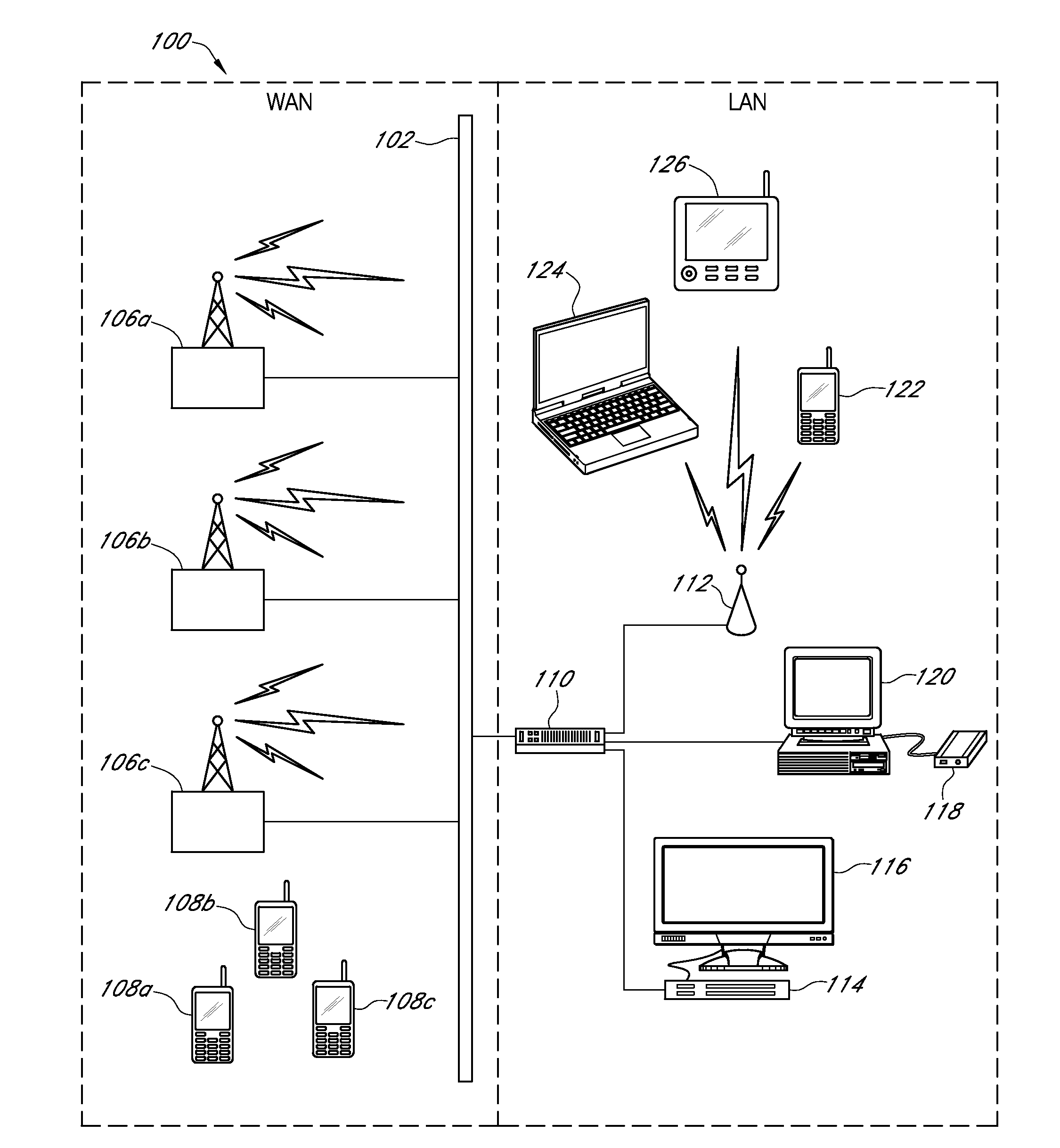Systems and methods for optimizing short range wireless communications within a larger wireless network
- Summary
- Abstract
- Description
- Claims
- Application Information
AI Technical Summary
Benefits of technology
Problems solved by technology
Method used
Image
Examples
Embodiment Construction
[0034]In accordance with an exemplary embodiment of the present invention, FIG. 1 illustrates a networked computing system 100 including various wireline and wireless computing devices that may be utilized to implement any of the short-range wireless communications optimization processes associated with various embodiments of the present invention. The networked computing system 100 may include, but is not limited to, a group of remote base station devices 106a-c, any one of which may be associated with a macrocell, a microcell, or a picocell base station that may each be a neighboring base station to one or more short-range transceiver devices 112 (e.g., a femtocell or a picocell device) within a particular region of the networked computing system 100; a data communications network 102, including both Wide Area Network (WAN) and Local Area Network (LAN) portions; a variety of wireless user equipment, including: cellular phone or PDA devices 108a-c, 122, a laptop or netbook computer...
PUM
 Login to View More
Login to View More Abstract
Description
Claims
Application Information
 Login to View More
Login to View More - R&D
- Intellectual Property
- Life Sciences
- Materials
- Tech Scout
- Unparalleled Data Quality
- Higher Quality Content
- 60% Fewer Hallucinations
Browse by: Latest US Patents, China's latest patents, Technical Efficacy Thesaurus, Application Domain, Technology Topic, Popular Technical Reports.
© 2025 PatSnap. All rights reserved.Legal|Privacy policy|Modern Slavery Act Transparency Statement|Sitemap|About US| Contact US: help@patsnap.com



